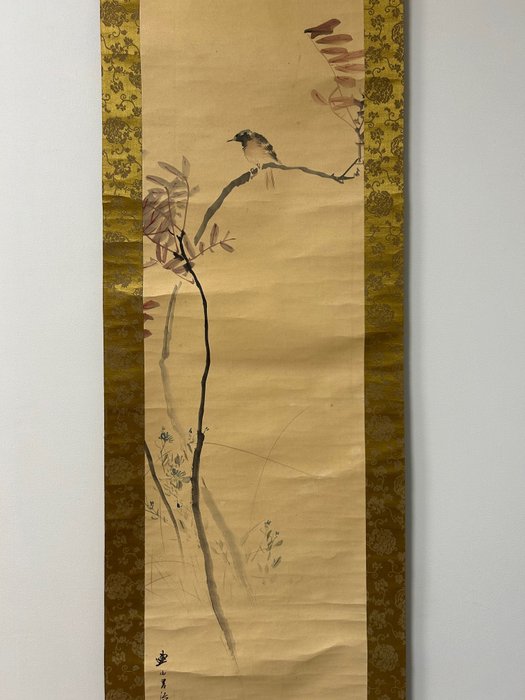
Kacho-ga - With signature and seal 益信 Masunobu - Japón - Periodo Edo tardío (Sin Precio de Reserva)
N.º 83536575

N.º 83536575

Artist: Kishi Renzan岸連山(1804 - November 14, 1859) was a Kishi school painter in the late Edo period. He was born in Kyoto. His maiden name is Aoki. He later became Kishikoma's adopted son. His childhood name was Tokujiro. He later called himself Masanori, Toku, etc. His common name is Bun Jin. His characters are Shido and Shijin. His name is Manshoro. Born in Kyoto in the first year of Bunka as the son of Shinsuke Aoki. He studied under Kishikoma and Kishiyoshi. He married Haru (Haru), who was Kishikoma's eldest daughter and the daughter of Kishiyoshi's wife Sada's first son-in-law, and was adopted by her son-in-law and became the third generation inheritor of Kishiha. From 1823 onwards, like his ancestors, he served the Arisugawa Imperial family. In 1855, he was in charge of creating wall paintings for the Kyoto Imperial Palace, including the Otsune Goten Shinguchi-no-ma, the Gakakusho-Gan-no-ma, and the Geishun-nanno-ma, and was second only to Kishidai, the second generation member of the Kishi school. It can be seen that he was doing great work and was positioned as the third generation of the Kishi school. His works are also confirmed to be in the collections of Komyoji Temple, Shimabara Kadoya, and Tenneiji Temple in Kita Ward, Kyoto City, which has deep connections with the Kishi school.
Along with Nakajima Raiaki, Yokoyama Kiyoki, and Shiokawa Bunrin, he was considered one of the ``Four Great Heian Houses'' of the late Edo period's art world. His early painting style was characterized by a decorative style, but in his later years, under the influence of the Shijo school, his painting style changed to a gentle one, depicting familiar flowers, birds, and animals, making full use of ink and using light colors. . Renzan can be said to be the artist who switched from Kishikoma's individualistic expression to modern sketching techniques and became the catalyst for the modernization of the Kishi school, which continued into the next generation, Takedo.
His grave is at Honzenji Temple in Kamigyo Ward. Renzan had a son named Kugaku, but he did not choose him as his successor and married his daughter Motoko to Kishichikudo, his disciple, to succeed him. His other disciples include Kose Koishi and Mori Harugaku.
With signed tomobako.
Material: paper and silk
Signed and Sealed
Roller ends: bone
Dimensions:
Total dimensions: approx. 184 x 38 cm (excl. roller ends)
Painting dimensions: approx. 121.5 x 28 cm
Good condition, antique item have originally crease, wrinkles, stains and one roller end was missing, please also look at the listed photos for a reference.
Will be well packaged and shipping by Japan Post in fast delivery.
Cómo comprar en Catawiki
1. Descubre algo especial
2. Haz la puja más alta
3. Paga de manera segura